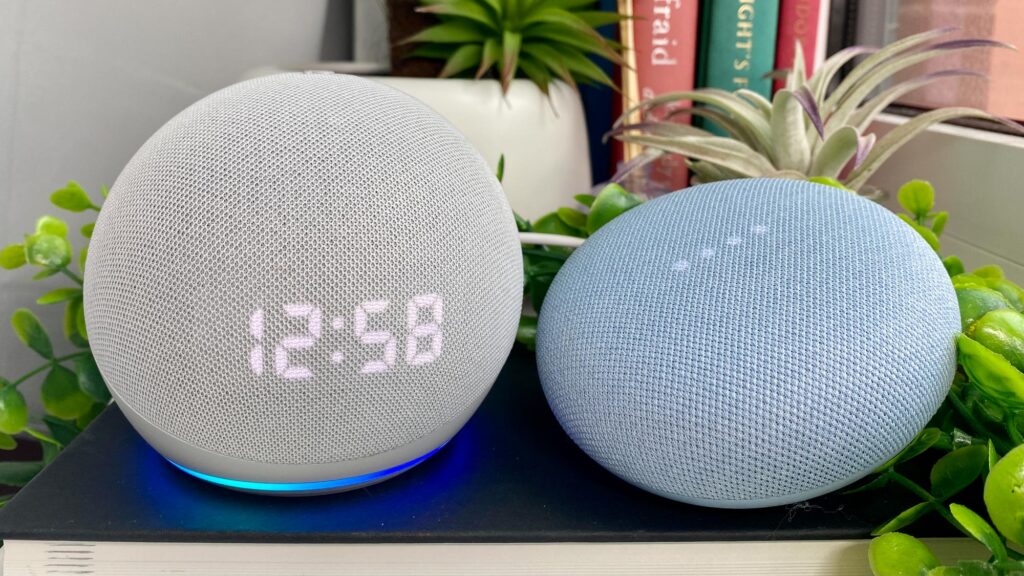Businesses must stay competitive or risk losing out on consumers who embrace voice technology at unprecedented levels. Voice assistance is becoming increasingly popular among many companies. Nevertheless, they fail to comprehend the ease with which customer behavior can change. Voice assistants have been adopted more quickly by consumers since the launch of the smartphone.
With the proliferation of smart speakers, more and more consumers are able to purchase them for ever-lower prices. Marketers and brands sense an opportunity for a new channel of communication when smart speakers become commonplace in homes. Last count of Alexa skills showed more than 70,000, and many brands such as Capital One, TD Ameritrade, Starbucks, Domino’s, Kayak, Uber and more provide utilities to provide consumers with access to services they offer.

Despite the recent shift in technologies, Alexa (and Google Home’s) most useful functions today are still connected with home automation: answering questions, setting timers, alarms and reminders, as well as reading instructions aloud. The Amazon Echo device has sold more than 100 million units, but only 2% of its owners have repeated purchases. To increase this number, marketers need to develop a solid voice strategy, but most are simply copying their existing voice experiences and missing the most compelling new uses for voice.
Use in Informational Searches

Many credit card companies such as Capital One let consumers check their credit card balance or make payments when due. The procedure to do so requires them to access the app by name, sign in with their personal details, and enter a PIN code of four digits. However, this only adds extra time and friction to the customer experience because most basic voice skills available today are just about as useful as the ones in this list. If you want to handle your finances, you might be better off with a chatbot or app rather than a hands-free system, which hardly allows you the attention needed?
Because smart speakers and voice skills are now more accessible, brands need to think “higher up the funnel.”. Think about what your customers might think, need, and consider as they search for information instead of repeating things they already know. There is a comprehensive Amazon design guide for voice that shows how brand developers can mark up their voice skills and think through scenarios so that they can respond to consumer questions.
“Alexa, what are blackheads?” would be an example: “Alexa, what are blackheads?”The search for information is not purely informational, but it is a basic problem that people often have with their skin. In an industry like skincare, the next logical question would be “how do I get rid of them,” and that’s where the real opportunity might lie.
A brand that is able to capitalize on user-directed, information-based questions that consumers ask every day can actually leverage smart speakers as a channel for customer acquisition. A solution to a consumer’s most urgent difficulties doesn’t stop here; consumers can also be recommended new or connected products. Informational search queries can give brands an advantage as “ins” to higher value transactions, allowing them to continue a conversation.
Growing use of Smart Speakers for product recommendations

Several brands are using voice commands to reorder pizzas or drinks, including Domino’s Pizza and Starbucks, but these functions also demonstrate how limited smart speakers can be. What value is voice technology going to bring if marketers believe it can only be used for accessing favorite, familiar, and favorite orders? Pizza and coffee are great to live off, but sometimes you need to switch it up a little bit. Although rideshares can be called with voice skills as well, what if you don’t want to call it out loud?
As a result, smart speakers can allow brands to deliver better product recommendations by benefiting from strong informational search visibility. Brands can leverage a natural, conversational flow to keep things open ended, informative, helpful and gain real insight into consumers by asking them to start a recommendation for their perfect skincare routine, TV or car. Furthermore, by using Alexa applications you have the option of pushing your brand’s recommendations directly into your consumers’ hands, enabling them to take action right away or make a purchase without having to navigate away from their phone.
A few reasons prevent this from being a common practice yet. The consumer has been discovering, considering, and evaluating products through disparate and disconnected channels, and because of the lack of continuous channels necessary to comprehensively engage a consumer, marketers have not taken an holistic approach to customizing their offerings.
Brands can start to think about what that holistic approach means with intelligent speakers, mobile voice assistants, chatbots, social messaging and other conversational interfaces in tow. Brands can benefit from the engagement that these channels produce as long as consumer preference for them continues to grow. A product recommendation on our own Vichy Canada project drove multiple minutes of continuous engagement, resulting in 35% more sales than the traditional ecommerce approach.
You can gain access to these experiences via a voice assistant, smart speakers, chatbot, and more. While increasing revenue for brands, they also provide greater satisfaction for consumers. Additionally, they help consumers ignore the seemingly limitless number of choices you have today.

Onboarding guided by smart speakers.
The majority of skills perform poorly when prefixing an existing customer relationship, but smart speakers have the potential to help you extract a greater level of value following an initial purchase. It may not apply to CPG or a variety of other product categories, but if you think about the last time you were trying a new item and juggling instructions, it sounds like the perfect opportunity for a hands-free experience.
By utilizing a smart speaker, guided onboarding can not only enhance customer experience, but also allow brands to communicate with their customers more effectively. Whether it is Alexa or Google Home, consumers can be directed to tutorials through on-package instructions.
Conclusion
Getting consumers’ attention isn’t a problem for the world’s leading brands; however, engaging them is. The key to improving performance in today’s economy is to build deeper, more meaningful relationships with consumers. A voice application provides a platform for reaching consumers directly in a mainly private space and for fulfilling more of their needs and wants in an open-ended, direct manner.
Brands should make sure they demonstrate to consumers that they are there for them by personalizing and coordinating the products and experiences they provide. Chatbots and messaging-based engagements are popular ways that marketers use AI to engage with customers. A conversational AI solution coupled with these solutions can enable them to deliver the instant, personalized responses consumers expect, while also making these responses scalable and automated.




